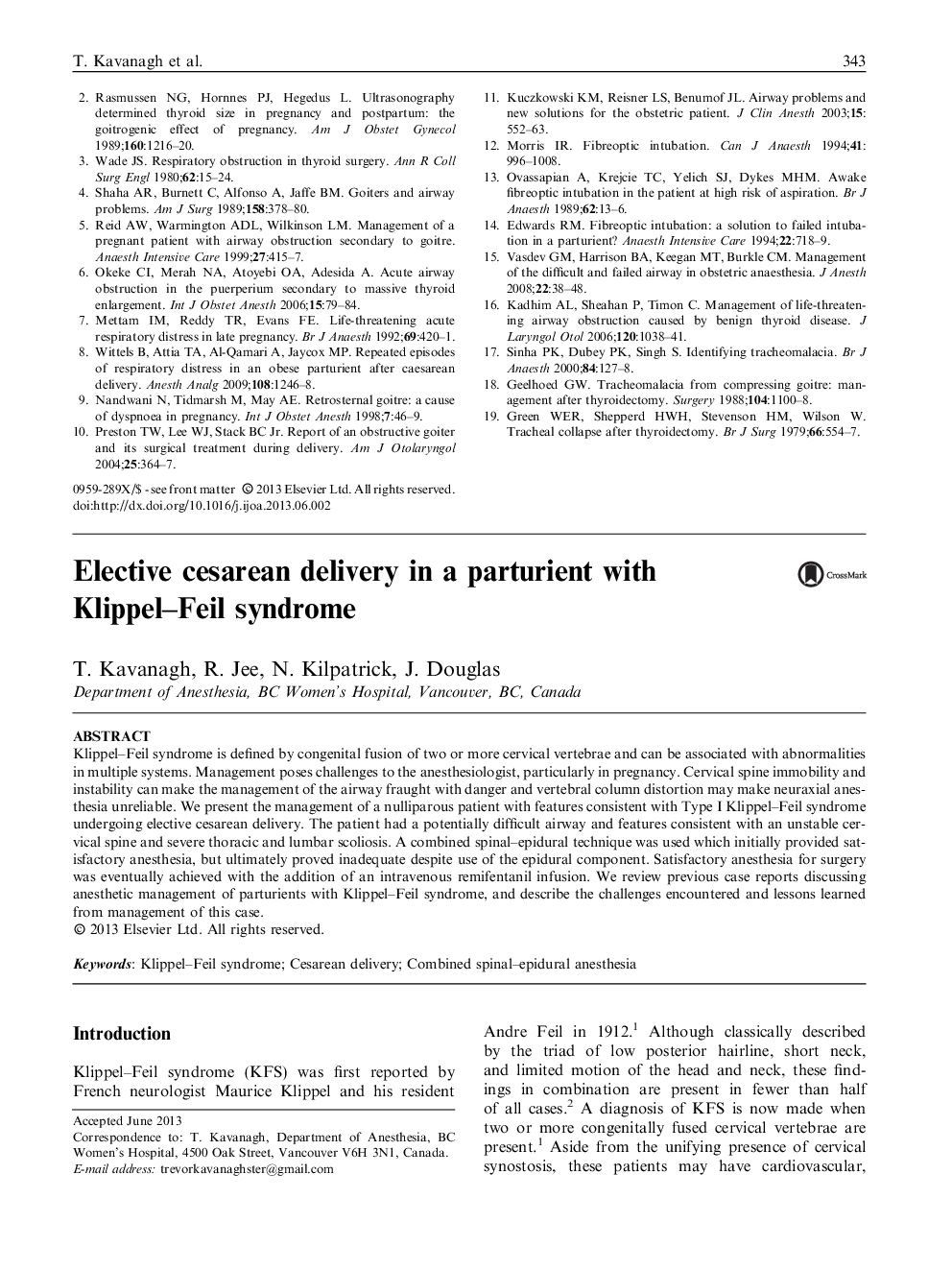| Article ID | Journal | Published Year | Pages | File Type |
|---|---|---|---|---|
| 2757815 | International Journal of Obstetric Anesthesia | 2013 | 6 Pages |
Klippel–Feil syndrome is defined by congenital fusion of two or more cervical vertebrae and can be associated with abnormalities in multiple systems. Management poses challenges to the anesthesiologist, particularly in pregnancy. Cervical spine immobility and instability can make the management of the airway fraught with danger and vertebral column distortion may make neuraxial anesthesia unreliable. We present the management of a nulliparous patient with features consistent with Type I Klippel–Feil syndrome undergoing elective cesarean delivery. The patient had a potentially difficult airway and features consistent with an unstable cervical spine and severe thoracic and lumbar scoliosis. A combined spinal–epidural technique was used which initially provided satisfactory anesthesia, but ultimately proved inadequate despite use of the epidural component. Satisfactory anesthesia for surgery was eventually achieved with the addition of an intravenous remifentanil infusion. We review previous case reports discussing anesthetic management of parturients with Klippel–Feil syndrome, and describe the challenges encountered and lessons learned from management of this case.
